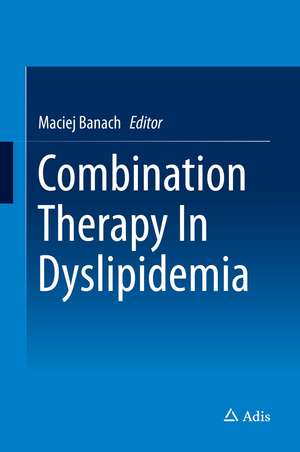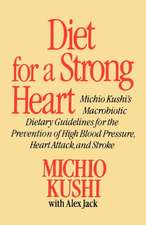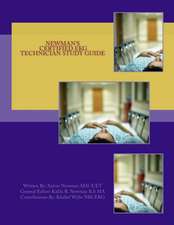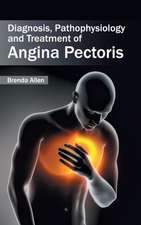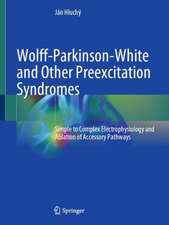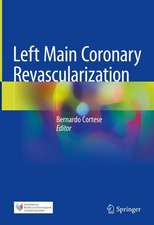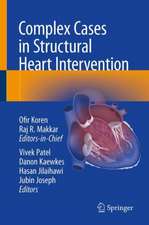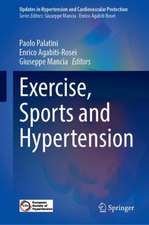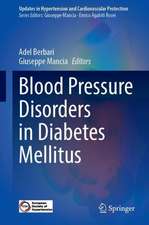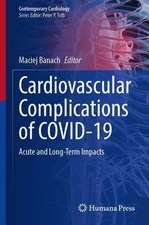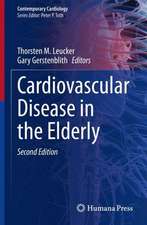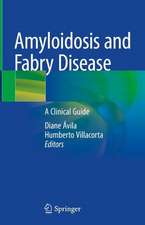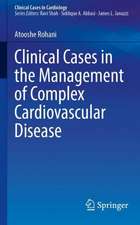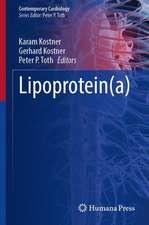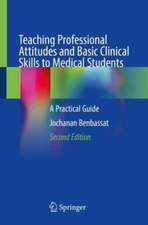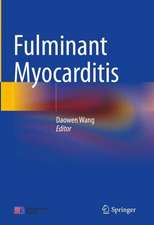Combination Therapy In Dyslipidemia
Editat de Maciej Banachen Limba Engleză Hardback – 9 iul 2015
Dyslipidemia is a leading cause of cardiovascular morbidity and mortality and most patients with this condition fail to achieve adequate control of their serum lipid levels with monotherapy. However, recent US and European guideline recommendations, based on randomized, controlled trials, fail to discuss combination therapy options for patients with dyslipidemia.
Statins remain the mainstay of drug therapy for hyperlipidemia and chapters in this book specifically examine the role of add-on therapy with different agents modulating the different lipid fractions in the blood, e.g. bile acid sequestrants, fibric acid derivatives (fibrates), omega-3 fatty acids (fish oils), inhibitors of Niemann-Pick C1 like 1 (NPC1L1) protein, cholesteryl ester transfer protein (CETP), apolipoprotein B-100 and microsomal triglyceride transfer protein (MTP) and the emerging proprotein convertase subtilisin/kexin type 9 (PCSK9) inhibitors. There is additional discussion of the role of non-drug therapy options such as nutraceuticals, functional foods and lipoprotein apheresis. The book also discusses the combination of antihypertensive drugs with lipid-lowering drugs in the management of cardiovascular risk in patents with dyslipidemia.
| Toate formatele și edițiile | Preț | Express |
|---|---|---|
| Paperback (1) | 648.23 lei 6-8 săpt. | |
| Springer International Publishing – 14 oct 2016 | 648.23 lei 6-8 săpt. | |
| Hardback (1) | 718.29 lei 6-8 săpt. | |
| Springer International Publishing – 9 iul 2015 | 718.29 lei 6-8 săpt. |
Preț: 718.29 lei
Preț vechi: 756.09 lei
-5% Nou
Puncte Express: 1077
Preț estimativ în valută:
137.46€ • 149.26$ • 115.47£
137.46€ • 149.26$ • 115.47£
Carte tipărită la comandă
Livrare economică 23 aprilie-07 mai
Preluare comenzi: 021 569.72.76
Specificații
ISBN-13: 9783319204321
ISBN-10: 3319204327
Pagini: 205
Ilustrații: VIII, 205 p. 22 illus., 15 illus. in color.
Dimensiuni: 155 x 235 x 17 mm
Greutate: 0.48 kg
Ediția:2015
Editura: Springer International Publishing
Colecția Adis
Locul publicării:Cham, Switzerland
ISBN-10: 3319204327
Pagini: 205
Ilustrații: VIII, 205 p. 22 illus., 15 illus. in color.
Dimensiuni: 155 x 235 x 17 mm
Greutate: 0.48 kg
Ediția:2015
Editura: Springer International Publishing
Colecția Adis
Locul publicării:Cham, Switzerland
Public țintă
Professional/practitionerCuprins
Foreword .- Statins and bile acid resins – is there a place for such a combination?.- Statins and fibrates – should it be recommended?.- Statins and ezetimibe – doubts or bright future?.- Statins and niacin – the end of residual risk therapy?.- Statins and omega-3 fatty acids – what more do we need?.- Statins and CETP inhibitors – anacetrapib and evacetrapib – the last hope?.- Statins and mipomersen – the issue of tolerability?.- Statins and lomitapide – a suitable response for HoFH.- Statins and PCSK9 inhibitors – defining the correct patients.- Other possible drug combination for dyslipidaemia.- Statins and nutraceuticals/functional food – Could be they combined?.- Lipid lowering therapy and apheresis – indications and outcomes.- Combination of lipid lowering agents with antihypertensive drugs – a joint fight against the two most important risk factors?.- Not only dyslipidaemia therapy – the time for polypills.- Drug Evaluation: Fenofibrate + simvastatin for the treatment of dyslipidemia: When and for whom?.- Drug Evaluation: Olmesartan medoxomil + rosuvastatin for the treatment of dyslipidemia and concomitant risk factors: A chance for better compliance?.- Conclusions and Take Home Message.
Textul de pe ultima copertă
Comprising contributions from leading lipidologists from around the world, this book presents the latest and most comprehensive knowledge on the different options for combination therapy of dyslipidemia, and includes discussion of future therapies that are currently in late stages of clinical evaluation.
Dyslipidemia is a leading cause of cardiovascular morbidity and mortality and most patients with this condition fail to achieve adequate control of their serum lipid levels with monotherapy. However, recent US and European guideline recommendations, based on randomized, controlled trials, fail to discuss combination therapy options for patients with dyslipidemia.
Statins remain the mainstay of drug therapy for hyperlipidemia and chapters in this book specifically examine the role of add-on therapy with different agents modulating the different lipid fractions in the blood, e.g. bile acid sequestrants, fibric acid derivatives (fibrates), omega-3 fatty acids (fish oils), inhibitors of Niemann-Pick C1 like 1 (NPC1L1) protein, cholesteryl ester transfer protein (CETP), apolipoprotein B-100 and microsomal triglyceride transfer protein (MTP), and the emerging proprotein convertase subtilisin/kexin type 9 (PCSK9) inhibitors. There is additional discussion of the role of non-drug therapy options such as nutraceuticals, functional foods and lipoprotein apheresis. The book also discusses the combination of antihypertensive drugs with lipid-lowering drugs in the management of cardiovascular risk in patents with dyslipidemia.
Dyslipidemia is a leading cause of cardiovascular morbidity and mortality and most patients with this condition fail to achieve adequate control of their serum lipid levels with monotherapy. However, recent US and European guideline recommendations, based on randomized, controlled trials, fail to discuss combination therapy options for patients with dyslipidemia.
Statins remain the mainstay of drug therapy for hyperlipidemia and chapters in this book specifically examine the role of add-on therapy with different agents modulating the different lipid fractions in the blood, e.g. bile acid sequestrants, fibric acid derivatives (fibrates), omega-3 fatty acids (fish oils), inhibitors of Niemann-Pick C1 like 1 (NPC1L1) protein, cholesteryl ester transfer protein (CETP), apolipoprotein B-100 and microsomal triglyceride transfer protein (MTP), and the emerging proprotein convertase subtilisin/kexin type 9 (PCSK9) inhibitors. There is additional discussion of the role of non-drug therapy options such as nutraceuticals, functional foods and lipoprotein apheresis. The book also discusses the combination of antihypertensive drugs with lipid-lowering drugs in the management of cardiovascular risk in patents with dyslipidemia.
Caracteristici
Addresses a gap left by the latest dyslipidemia management guidelines
Current and comprehensive discussion of options for combination therapy of dyslipidemia
Contributions from an internationally acclaimed panel of expert lipidologists
Current and comprehensive discussion of options for combination therapy of dyslipidemia
Contributions from an internationally acclaimed panel of expert lipidologists
